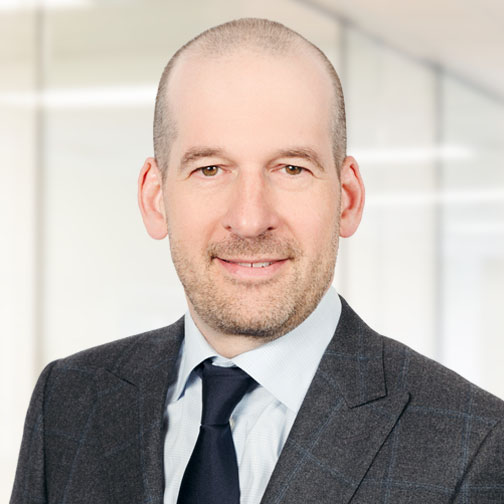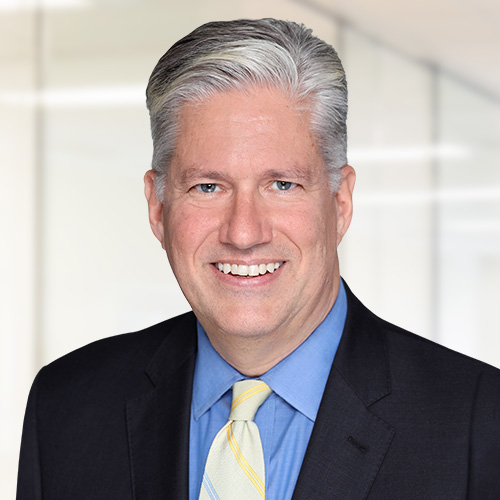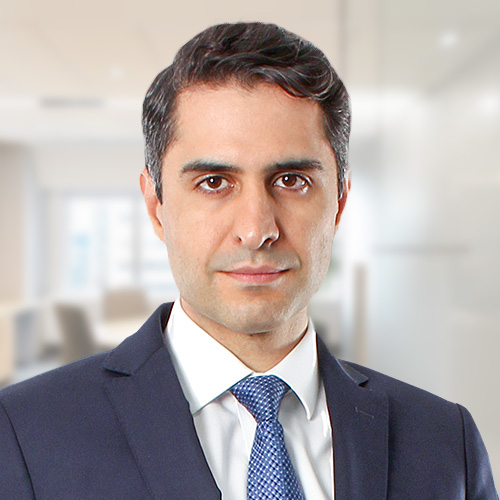Commentary
Boring banks outperform the Magnificent 7
March 6, 2025
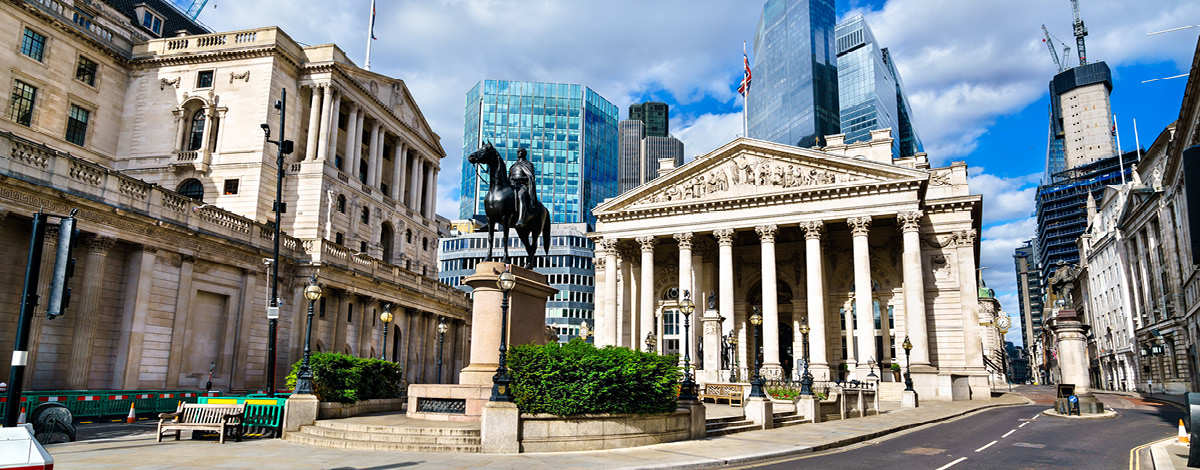
The “Magnificent 7” – Apple, Microsoft, Alphabet, Amazon, Nvidia, Meta and Tesla – have long dominated markets, driving index returns and capturing investor attention. Their leadership in AI, cloud computing and consumer tech has fueled impressive growth, but with stretched valuations and increasing regulatory pressures, the question remains: Are they still the best opportunities?
Meanwhile, European banks have quietly outperformed these tech giants, benefiting from rising interest rates, strong capital positions and attractive valuations. These financial institutions are delivering solid earnings growth, improving margins and returning capital to shareholders. This week, we highlight how investing in so-called “boring” businesses can still generate market-beating returns – even against the strongest stocks.
Banks in Europe? That’s boring, right?
European banks, often viewed as “boring” investments, have faced years of stringent regulations since the Global Financial Crisis (GFC), designed to bolster stability and reduce systemic risk. While these measures have limited growth compared to more dynamic sectors like tech, they have also fostered steady earnings, lower risk and more attractive valuations. Despite Europe’s slow GDP growth, driven by factors such as an aging population and geopolitical instability, European banks have outperformed expectations. Benefiting from rising interest rates, improving credit conditions and a stable regulatory environment, these institutions have offered investors a more resilient, low-volatility alternative to today’s high-growth stocks.
European banks dominate the Magnificent 7
As we look at the performance comparison between European banks and the Magnificent 7, the data speaks for itself. While the tech giants have had their moments of dominance, European banks have quietly outperformed. This chart highlights how these so-called “boring” financial institutions have consistently delivered stronger returns, offering an intriguing investment opportunity for those seeking stability and growth in today’s market.
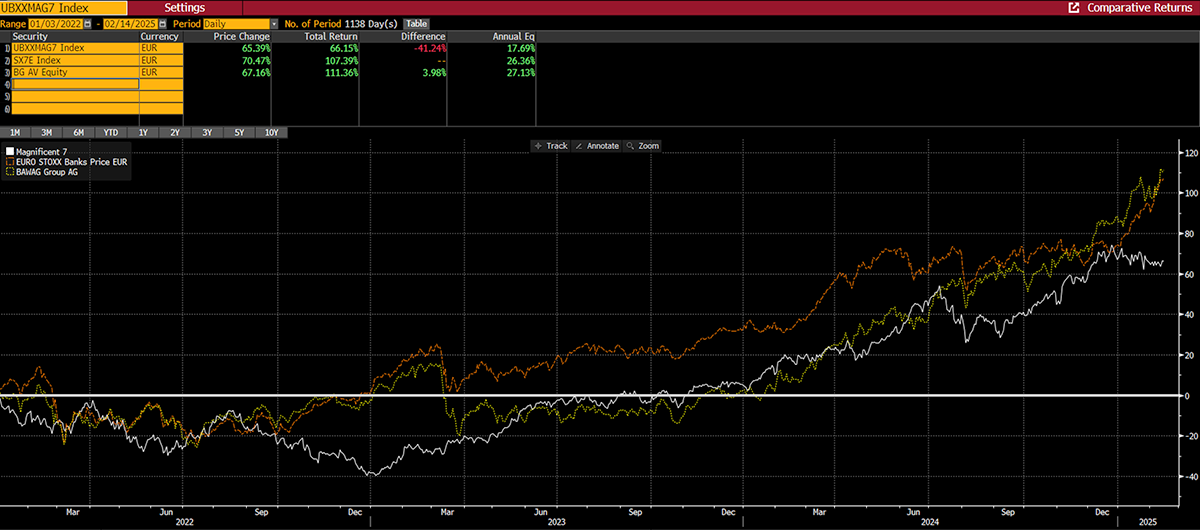
Source: Bloomberg
Introducing BAWAG: A strong performer in our portfolio
Now, let’s explore how our portfolio has positioned itself in relation to standout European banks, with a focus on BAWAG Group (BG VI), a key holding. As one of Austria’s leading banks, BAWAG has shown remarkable resilience and growth, driven by its solid capital position, cost efficiency and attractive valuation. In this section, we’ll discuss how BAWAG’s performance compares to our broader portfolio and whether it has contributed to our outperformance in the current market environment.
A turbulent history: BAWAG’s path to recovery and growth
BAWAG has a storied history marked by periods of both innovation and turbulence. Founded in 1922 by a former Austrian chancellor, the bank’s initial mission was to offer favourable credit terms to lower- and middle-income individuals under the name “Austrian Worker’s Bank.” The bank was forced to close in 1934 due to political reasons, but reopened in 1947, reestablishing close ties with Austrian trade unions.
In 2005, BAWAG merged with PSK, the Austrian Postal Savings Bank, founded in 1883. However, the bank faced a major setback in 2006, requiring a state bailout after an accounting scandal tied to the bankruptcy of US broker Refco. Several BG executives, including the CEO, were found guilty of fraud following subsequent investigations. In 2007, BAWAG was sold to a consortium led by Cerberus Capital Management, but another round of state aid was needed in 2009 due to the GFC.
The years following saw extensive restructuring as Cerberus took full control. BAWAG underwent significant cost-cutting and streamlined operations, which ultimately paved the way for a recovery. The bank was recapitalized in 2013 and again in 2014, with GoldenTree Asset Management acquiring an equity stake through a debt-for-equity swap. By the end of 2017, BAWAG went public, marking the culmination of its recovery and transformation.
Today, BAWAG stands as a testament to resilience, having overcome significant challenges to become one of Europe’s more efficient banks. The heavy restructuring and focus on capital efficiency and cost-cutting have allowed BAWAG to achieve one of the highest returns on tangible equity (RoTE) in the sector. This transformation has set the foundation for the modern BAWAG, which today continues to thrive in a competitive European banking landscape.
What BAWAG does with its significant capital
BAWAG has made strategic moves to deploy its substantial capital, further solidifying its position in the European banking landscape. Recently, BAWAG announced two key M&A deals aimed at expanding its footprint and capabilities. These include the acquisition of Knab, a fully online bank in the Netherlands, and the purchase of Germany-based Barclays Consumer Bank Europe.
Knab, previously known as Aegon Bank N.V., has long focused on serving the self-employed and was the first fully online bank in the Netherlands. After being acquired in 2023 by ASR Nederlands N.V., a Dutch insurance company, Knab was sold to BAWAG in February 2024. This acquisition allows BAWAG to tap into a growing digital banking market and broaden its customer base in the Netherlands, especially among self-employed individuals, a demographic that aligns with BAWAG’s growth strategy.
In addition to this, the purchase of Barclays Consumer Bank Europe in Germany strengthens BAWAG’s presence in a key European market, expanding its retail banking offerings and customer base. These strategic investments show how BAWAG is using its capital to strengthen its position in both digital banking and consumer markets, positioning itself for future growth across the continent.
It’s all about management
BAWAG’s success is driven by its highly effective and aligned management team. Widely regarded as one of the best communicators in European banking, the team is deeply invested, owning 3.9% of shares outstanding – more than any investment of another management team or board in the sector. This substantial ownership ensures strong alignment with shareholder interests.



